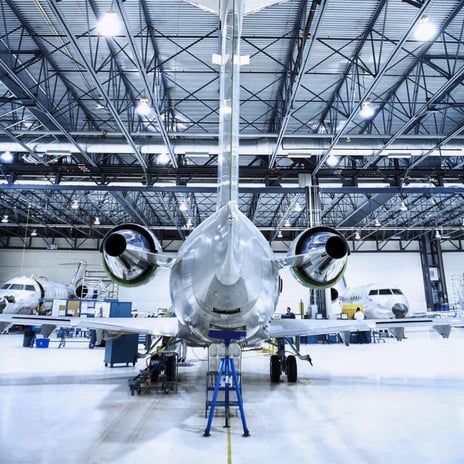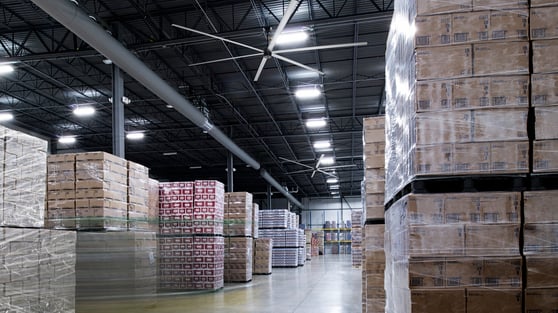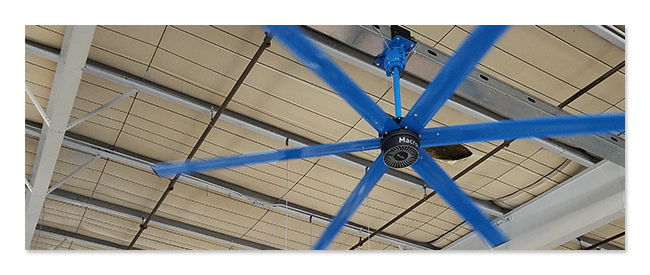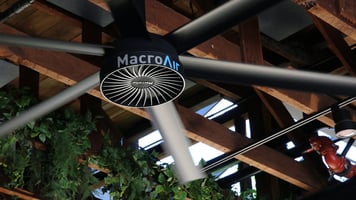High-volume, low-speed (HVLS) fans are extremely popular; they can be found in warehouses, gyms,...
How to Choose the Best HVLS Fan for Your Facility
After plenty of research and weighing different options, you’ve finally decided that a high volume, low speed (HVLS) fan is the right choice for cooling your facility. Great! But your work is far from finished. You also have to choose the right type of HVLS fan. There are several factors that determine the kind of fan that you use in your facility. As you go through the process of deciding which HVLS fan is best for your space, here are a few questions to keep in mind that will help you select the ideal fan for your cooling requirements.
What Size is the Space?

Generally speaking, the larger the space is that you need to be cooled, the bigger the fan you will need. HVLS fans from most manufacturers come in various sizes and each size is designed to provide cooling for a specific range of spaces. For example, if your area is on the smaller side, you may only need a 12′ fan. On the other hand, if you are looking to cool a larger space like a warehouse or distribution center, you may need a fan that is between 18′ and 24′. The size of the space you need to be cooled has a direct impact on the type of fan you choose for your facility.
What is Your Budget for an HVLS Fan?
When you are trying to calculate the cost of an HVLS fan, it’s easy to make the mistake of believing that the upfront cost of the fan is the only factor that you need to be concerned with. This simply isn’t the case. While the purchase price of the fan does matter, you also have to consider other factors like:
- Energy usage: A less efficient HVLS fan will use more energy each month, which raises its long-term costs
- Installation: Heavier and more complicated HVLS fans usually have more expensive installation requirements
- Maintenance and Repair Costs: Most fans require some type of upkeep so that they can stay operating in peak condition
You should consider all of these factors when choosing an HVLS fan, not just its upfront price.
What Type of Fan Will Your Space Accept?

While there are many kinds of HVLS fans available on the market today, not every fan is compatible with every space. For example, a fan might have voltage requirements that are not compatible with the type of electrical system that you have hardwired in your facility. You also have to consider the weight and installation requirements of the fan. Some larger fans can put a significant strain on the infrastructure of your building. If you choose a fan that isn’t compatible with your area, not only will your cooling be less efficient, you could be putting the area in serious danger.
What Will be Happening in the Space?
.jpg?width=553&height=415&name=Indian_Central_Railway_CSTM_Station_Mumbai_AVD3%20(2).jpg)
You might not think that what goes on in the space being cooled matters much, but it can actually have a significant impact on the type of HVLS fan you choose. If workers in your area need to be able to hear clearly to do their work and your HVLS fans are operating loudly, it could pose a threat to their safety and productivity. You also need to consider the number of people that will be in the area. The more people in a room, the more airflow and ventilation you will need to keep them safe and comfortable enough to get work done efficiently. According to the EPA, better workplace air quality can lead to higher productivity and fewer employee sick days.
Summary
There’s a lot that goes into choosing the right HVLS fan. By taking into account the type of space you need cooled, how big it is, what will be going on there and what your budget is for an HVLS fan, you can more effectively select a fan that will fit the bill for your facility’s needs.



